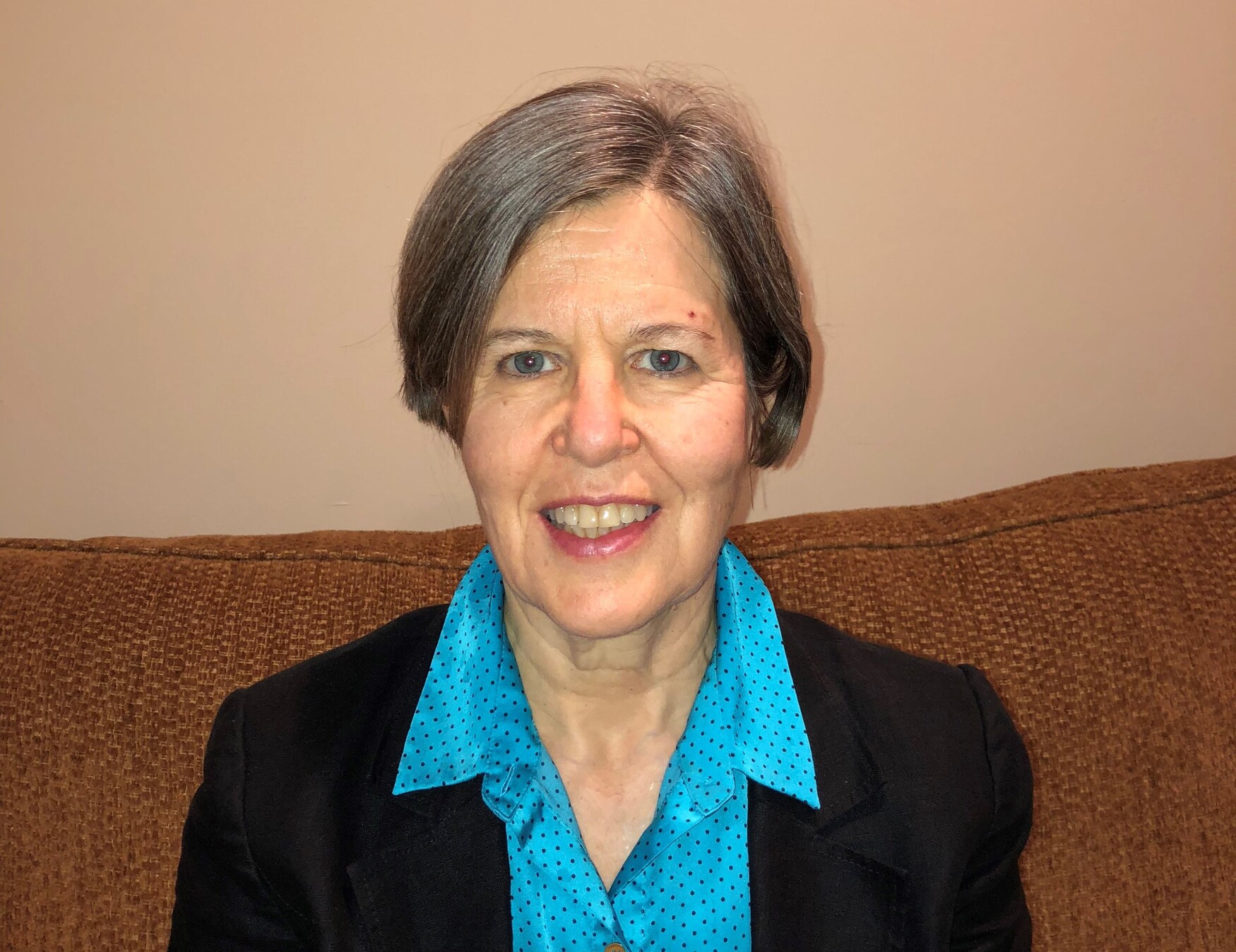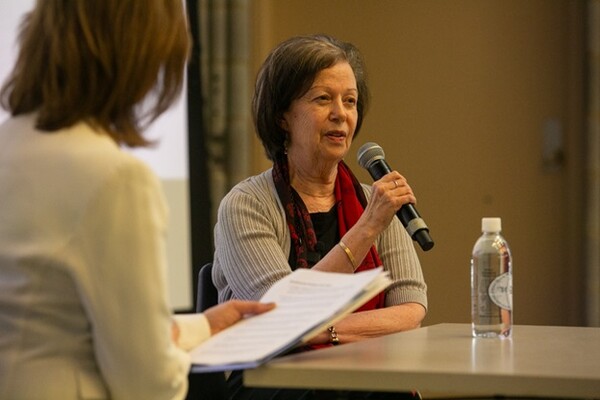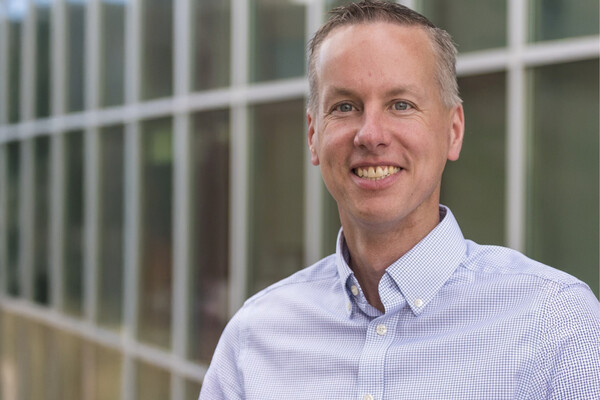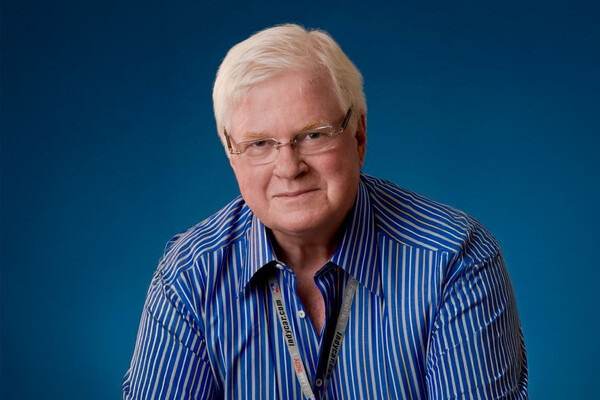Main Second Level Navigation
Breadcrumbs
- Home
- News & Events
- Recent News
- Insurance Risk and Pandemic Planning: Dr. Judith Beamish, MD ’76, PGME ’83 (Cardiology)
Insurance Risk and Pandemic Planning: Dr. Judith Beamish, MD ’76, PGME ’83 (Cardiology)

Dr. Judy Beamish, MD’76, PGME’83 (Cardiology) worked as a medical consultant and director in the insurance industry for more than twenty years, and was on staff in the Mississauga Hospital's department of medicine for 18 years. As the former Vice-President and Chief Medical Director at Sun Life Financial, she was responsible for providing medical input and education worldwide to the underwriting and legal departments, as well as crisis management.
I didn’t go looking for the job, it came looking for me.
From cardiologist to insurance medicine specialist, Dr. Judith Beamish hasn’t followed a typical trajectory. Now retired, she spoke with Faculty of Medicine’s Julie Lafford about her varied career.
From cardiology to insurance medicine, it sounds like you’ve had a very interesting career. Tell me about it.
When I finished residency and started practice in 1983, I was the first cardiologist in Mississauga, believe it or not. Before that, anyone who needed a specialist in cardiology had to come to Toronto. That might have been okay when Mississauga was a bedroom community but by the ’80s Mississauga has started to grow like crazy, so there was a real demand for cardiologists. On the first day I opened my practice, I was already booked solid for four months.
Less than two years later I had my first child and realized it was going to be very challenging to manage my busy practice and a family, so I made the tough decision to close my practice. One day I found myself at home with a newborn and the phone rang. There was a doctor on the phone I had never heard of and he said, “Judy I’d like to take you out for lunch and talk to you about insurance medicine.” By that time I had cabin fever and would have gone out for lunch with anybody, so I accepted. And that’s how I started my second career. I didn’t go looking for the job, it came looking for me.
What were you called on to do in insurance medicine?
I began as a consultant working part-time, assessing client cases that were too complicated for anyone who was not a physician. That was an exciting thing about the job — there were very few routine cases that crossed my desk. I was always learning something new, even though I never saw the actual patients. The variety was amazing.
Later in my career, I began re-rewriting the manual that helps underwriters assess client risk, and therefore the premium and terms of the client’s insurance. The manual needs to be continuously updated as advances are made in medicine. For example, when I started in the insurance business if you had hepatitis C, you couldn’t buy life insurance because there was no treatment and a significant number of people ended up with liver failure. Now, there are drugs on the market that can cure hepatitis C and not only can people get life insurance, they often pay the same rates as everybody else. Breast cancer is another example of a condition where the prognosis improved dramatically over a number of years. So re-writing the manual was essential to understanding mortality risk and incorporating that into our practices — both to be fair to applicants, but also to remain competitive.
You went on to become Vice-President and Chief Medical Director at Sun Life Financial — how did that opportunity arise?
Once again, my phone rang. It was another invitation to lunch — this time from the retiring Vice-President and Chief Medical Director at Sun Life Financial. He was wondering if I was interested in the job, and I started in 2004. It was a position with global responsibilities, which was fun because I kept doing some of the same things I enjoyed, but for different countries. There aren’t many medical doctors working in the industry, so every time a new medical concern would arise, the Sun Life executives would come to me. For example, during the 2000s there was a big concern about bird flu and flu pandemics in general, so I became involved in pandemic planning and started working with people in risk management. That was really interesting and I actually became involved with a federal government and private sector working group on pandemic planning, which included representatives from the food industry, trucking, telecommunications and many others.
Cardiology remains one of our programs with the fewest percentage of female learners and practitioners. What was it like studying in the ’70s and ’80s?
There was definitely a glass ceiling — it was there in pretty much all specialities, but cardiology was one of the worst. There were no other female residents in the program when I started, and just one woman a year or two behind me. In the GTA there was one female cardiologist at Toronto Western and one in the suburbs, so I had very few role models and no encouragement whatsoever.
It was hard — especially when I could see how some of the male residents were being encouraged and offered jobs that weren’t even posted. That’s just the way it was and it’s only in looking back that I can really see the opportunities that were just not available to me.
What words of wisdom do you have for current medical students?
It’s extremely important to look after your own health and well-being because the demands on us from our patients are so great it’s a long, tough grind. It’s very easy to ignore the need to exercise, eat properly, sleep well or look after your emotional well-being. But if you don’t, you’re going to burn out. The same is true in business too, even though my colleagues in clinical practice thought I had it easy. But there are different stresses, time demands and expectations — and in many cases a lot of money on the line.
News


